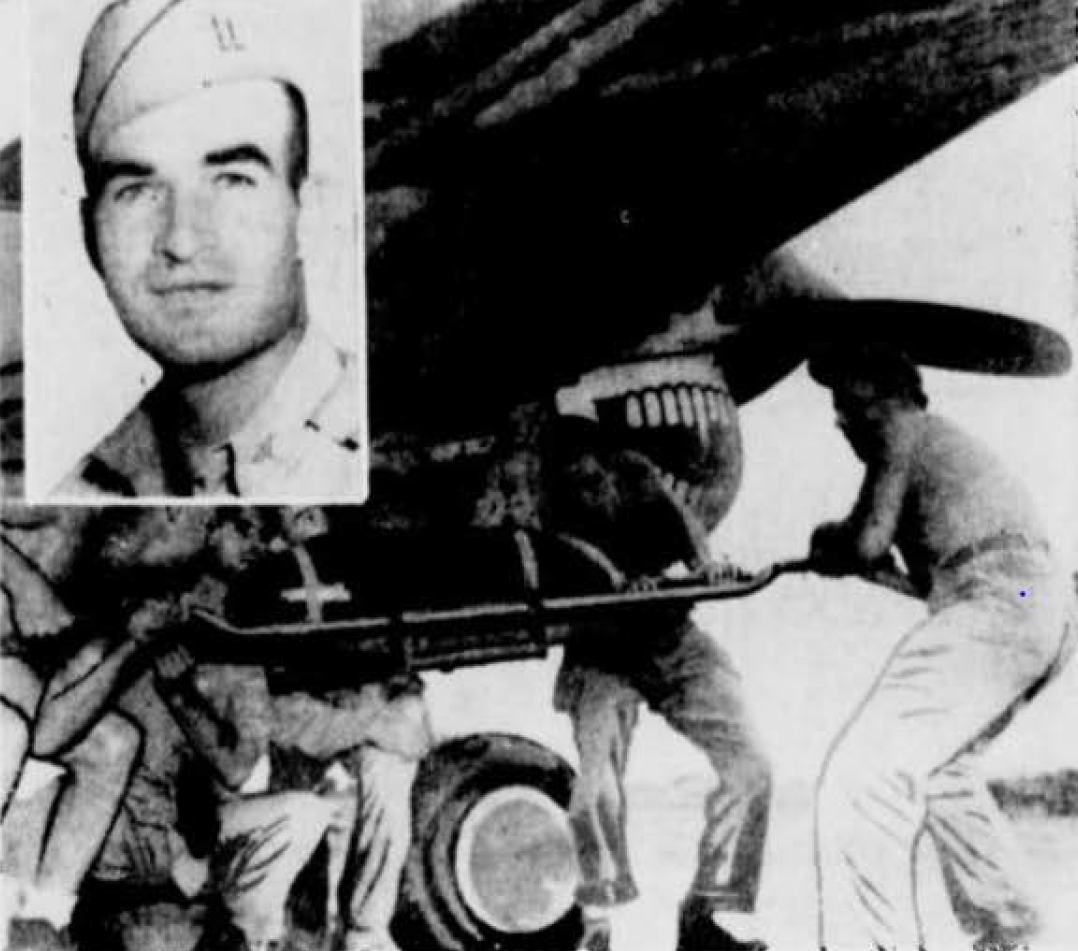 COWBOY OF THE SKY WINS ‘TING HAO’ ... Capt. Owen R. Allred of Cedar City, inset, a Tenth Air Force pilot, was a flying hero of the battle of Myitkyina, Burma. In the air so often and so accurate with his pin-point bombing, Allred was loudly acclaimed by Chinese soldiers who would stand in their trenches every time they saw a P-40 and shout "Ting Hao (okay) Allred." Among those servicing his plane with bombs is a Salt Laker, Sgt. Frank C. Burns, next to right. (Tenth Air Force photos.)
COWBOY OF THE SKY WINS ‘TING HAO’ ... Capt. Owen R. Allred of Cedar City, inset, a Tenth Air Force pilot, was a flying hero of the battle of Myitkyina, Burma. In the air so often and so accurate with his pin-point bombing, Allred was loudly acclaimed by Chinese soldiers who would stand in their trenches every time they saw a P-40 and shout "Ting Hao (okay) Allred." Among those servicing his plane with bombs is a Salt Laker, Sgt. Frank C. Burns, next to right. (Tenth Air Force photos.)
